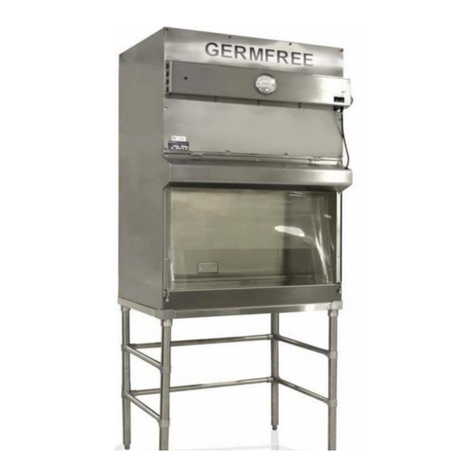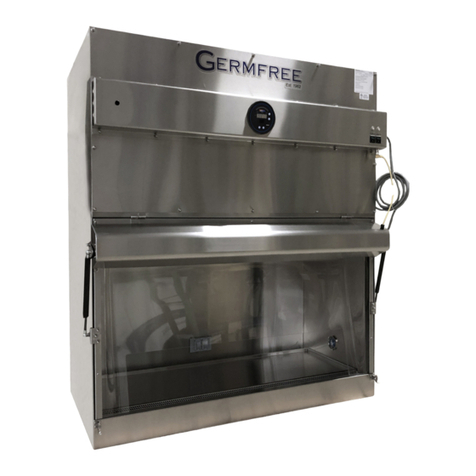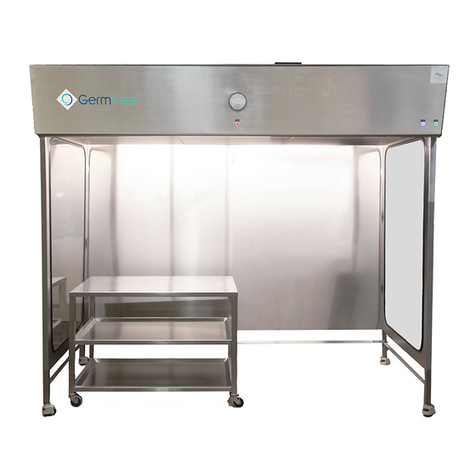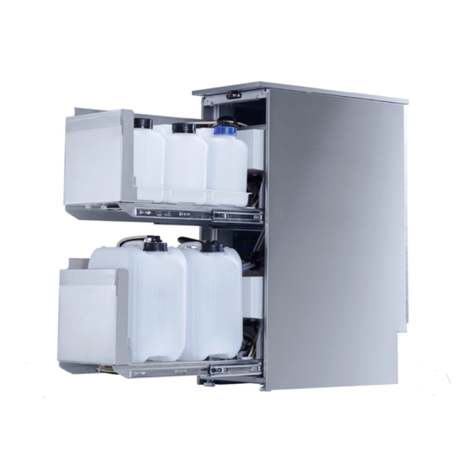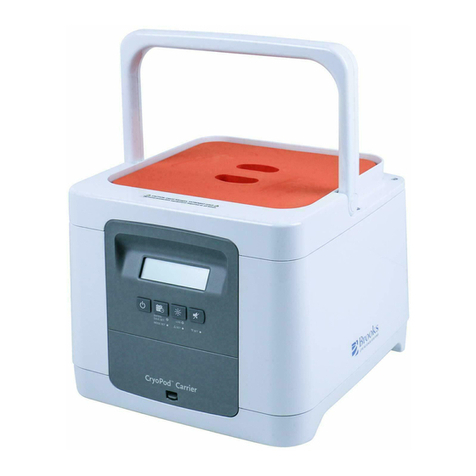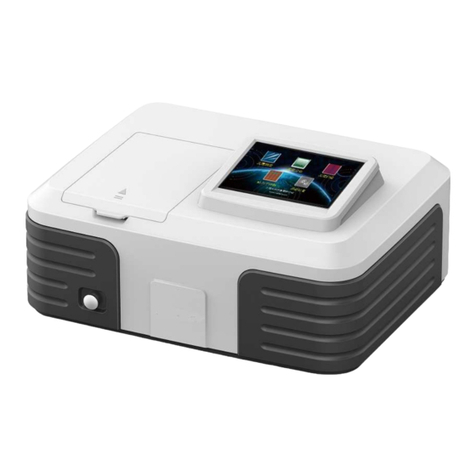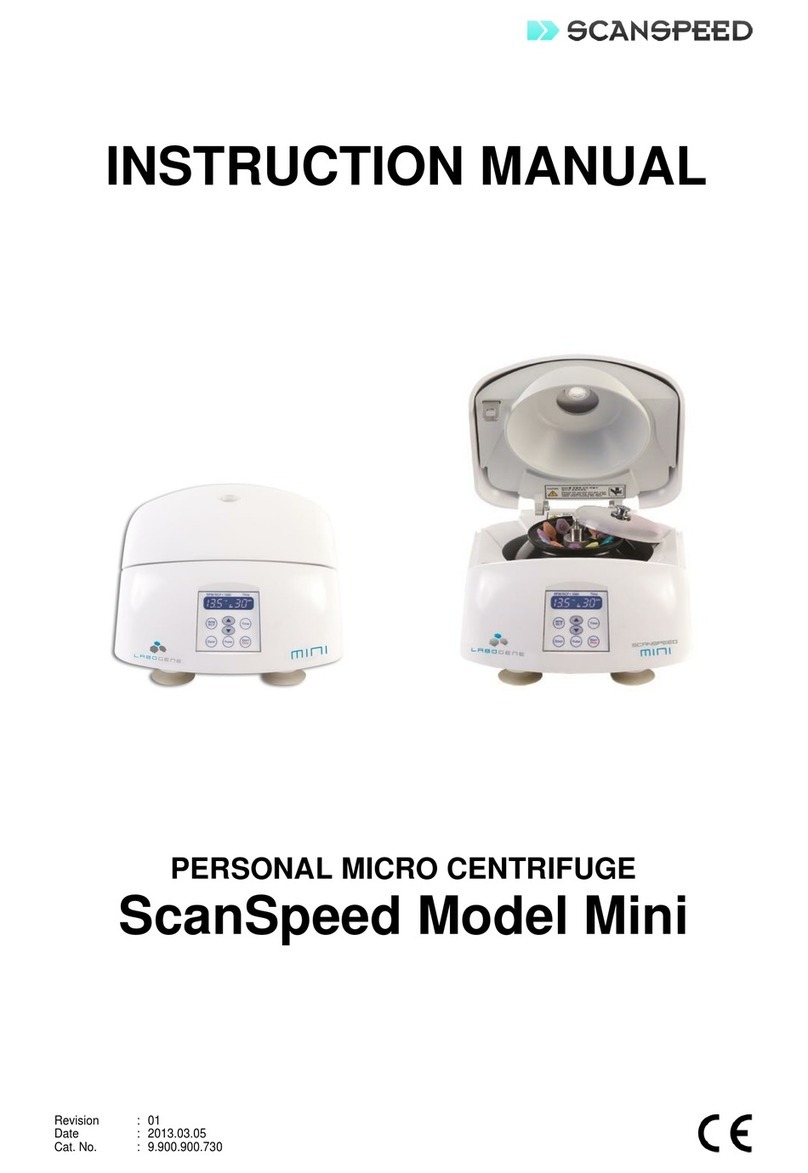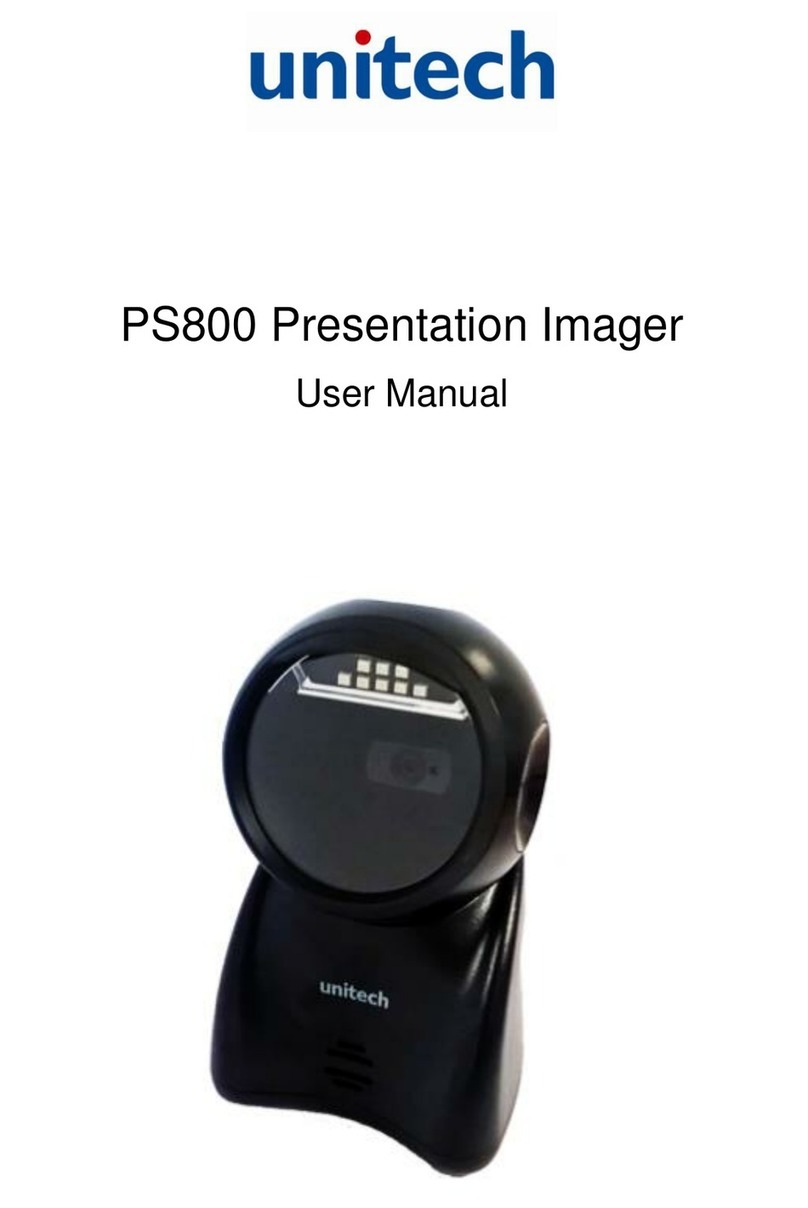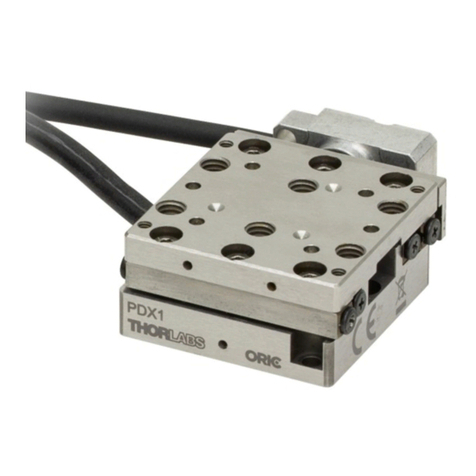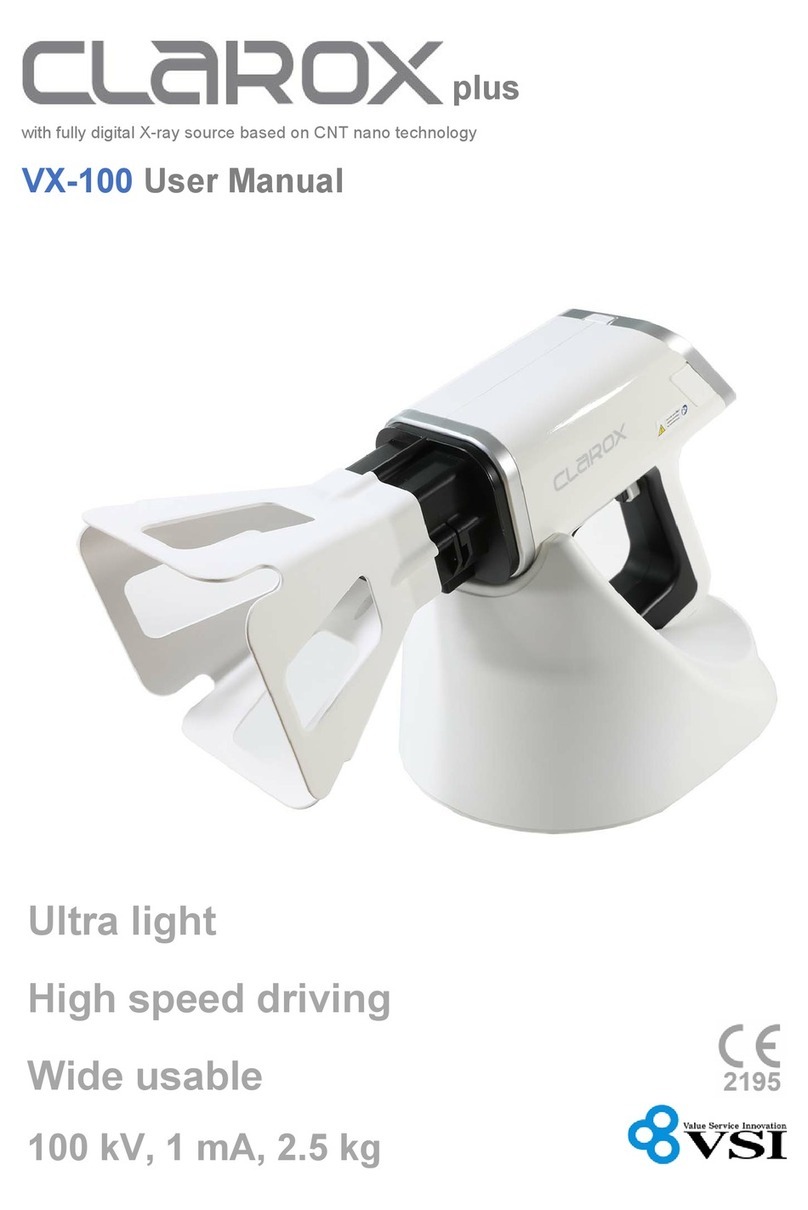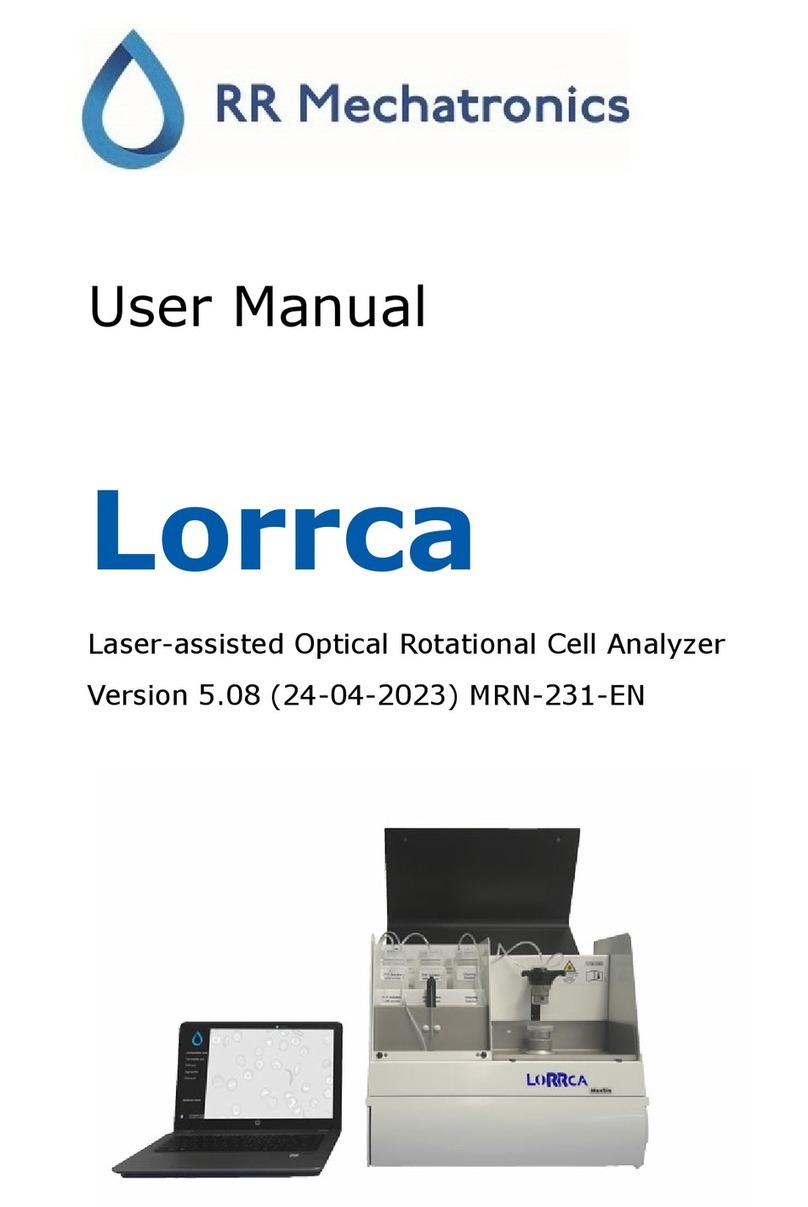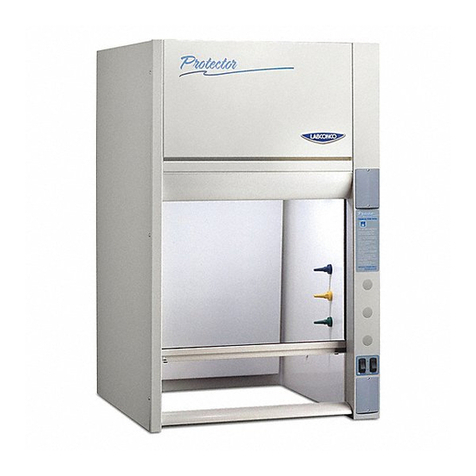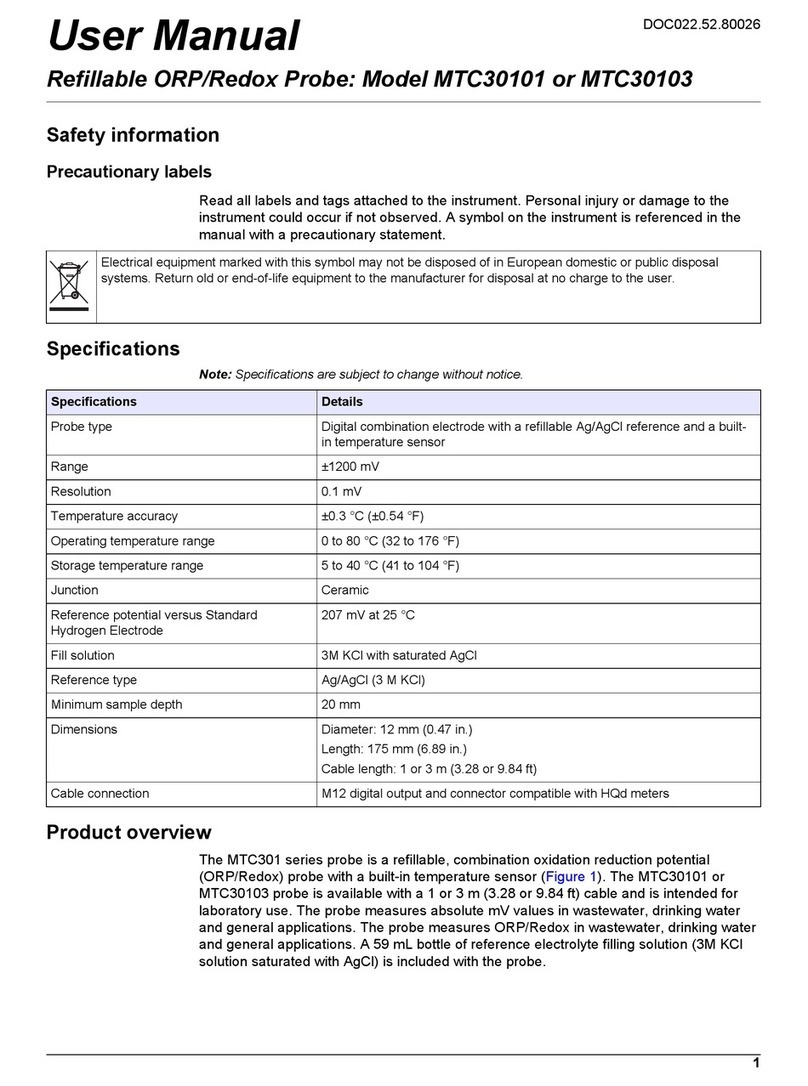Germfree Z Series User manual

Germfree - Z-Series User Manual - v1.0 - 11AUG2023 - RMH
Horizontal Laminar Flow Hood (Z-Series)
User Manual

Z-Series
Horizontal Laminar Flow Hoods
User Manual
2
Contents
Introduction ........................................................... 3
Installation ............................................................ 4
Electrical Services ...................................................... 5
Operation ............................................................. 6
Maintenance .......................................................... 7
Prefilters ........................................................ 7
HEPA Filters ..................................................... 7
Motor Blower .................................................... 7
Filter Diffuser .................................................... 8
Polycarbonate Sides.............................................. 8
Optional Equipment ............................................. 9
Tests and Results ....................................................... 10
Airflow Velocity .................................................. 10
Airflow Paerns .................................................. 10
HEPA Filter Integrity Tests ......................................... 10
Certification / Testing Expectations ...................................... 11
Quality Statement ..................................................... 12
Our Company ......................................................... 12
Germfree’s Mission .................................................... 12

Z-Series
Horizontal Laminar Flow Hoods
User Manual
3
Introduction
The Z-Series Hood is designed for the unencumbered and fluid handling of non-hazardous materials in a
sterile working environment. The work area is bathed by constant positive pressure horizontal airflow that has
passed through a High Efficiency Particulate Air (HEPA) filter. This filter removes organisms and particulates 0.3
micron in size with an efficiency of 99.99%. It is even more efficient for both larger and smaller particles due
to the tendency for larger particles to get inertially trapped by the filter, while smaller particles exhibit particle
diffusion in the direction of the fiber. The HEPA filter is positioned in the rear of the work area and is protected
by a removable, perforated metal diffuser located immediately in front of it. The airflow utilized by the Z-Series
Hood consists of moving individual streams of unidirectional, ultra-clean air along parallel lines with minimal
turbulence. This airflow paern is known as laminar.
Your Z-Series Hood is intended to be used as a work area that maximizes product quality control and minimizes
risk of product exposure to contaminants. It should only be used with non-hazardous materials since the air
being bathed over the product is reintroduced into the environment without being filtered again. The Z-SERIES
hood does not provide any protection to the user.
Your Z-Series Hood has been thoroughly tested. The HEPA filter was integrity tested by the filter manufacturer
and again at our factory during the assembly process. All testing was performed in accordance with established
standards and procedures, including Federal Standard 209 and NSF/ANSI 49.
Contact Germfree Customer Service
+1 386.265.4300

Z-Series
Horizontal Laminar Flow Hoods
User Manual
4
Installation
The Z-Series Hood should be transported and moved in an upright position. Your hood will arrive fully
assembled and needs to be carefully uncrated. It is very unlikely that your hood will arrive with damage, but if
you have any concerns about the quality of the unit, contact Germfree Customer Support immediately.
The hood should fit in any doorway (dimension here) wide and (dimension here) tall.
Once the hood is moved into the laboratory, it should be placed in an area that does not interfere with the air
paerns of the room. The air intake is located on top of the unit and should not be disturbed by neighboring
equipment. Additionally, if there is any window in the room, it should remain closed while the hood is in
operation.
If you are unsure where to place the hood, a simple smoke test will help determine the proper location. There
should be no turbulent air currents next to, in front of, or below the hood.
Aer installation is complete, the Z-SERIES hood needs to be certified by an independent testing organization.
This should be done before the unit is placed into service and should be repeated every so oen in accordance
to the pharmacy board in your state. Additionally, if the unit is moved to a new location, it should be re-certified.

Z-Series
Horizontal Laminar Flow Hoods
User Manual
5
Electrical Services
The Horizontal Laminar Flow Workstation can operate at 120v, 60 Hertz or 220v, 50 Hertz. During shipment,
the power cord is coiled within the control panel. The plug of the power cord is a NEMA 5-15P and should be
connected to the appropriate 3-prong 120v receptacle. For convenience of operations and service, all circuitry is
located within the control panel.

Z-Series
Horizontal Laminar Flow Hoods
User Manual
6
Operation
Flip the switch located on the top of the hood to
the on position to allow power into the unit.
Press the icon to power on/off the unit.
When powered on, the Laminar Flow Hood will
require a few minutes of startup time. The unit
will be safe to use when the “Safe to Work” icon
Press the icon to turn on/off the included LED
lamp.
Press and hold the icon for three second to
turn on night mode. Night mode will turn on a
blue light in the workstation instead of the nor-
mal white daytime light. Tap the icon again to
turn off night mode.

Z-Series
Horizontal Laminar Flow Hoods
User Manual
7
Maintenance
Prefilters
The prefilter is located horizontally on the top of the unit and should be kept in place at all times. The prefilter
supplied with the unit is a fiberglass type similar to an air-conditioning filter. Once the unit has been placed into
service, the prefilter should be inspected monthly by a certifier. Aer it has been determined by the certifier how
long it takes for the prefilter to load, it should be routinely inspected at this interval to determine if it should be
replaced. Aer some experience is gained, you may prefer to select an arbitrary time to replace the prefilter.
Replacement prefilters are available from stock or it may be possible for you to obtain a usable substitute from
an air conditioning supply company or hardware store located in your community.
Your responsibility as the user of this hood is to keep a log of inspections and replacements of the prefilters.
HEPA Filters
The average life of a HEPA filter is 3 to 5 years or longer, depending on the cleanliness of the ambient air and the
care taken while using the unit. A loaded HEPA filter cannot be cleaned or recycled. New filters are available from
Germfree and we recommend that they be changed by qualified personnel.
Your certifier, using R.T.V. silicone sealant, can repair small holes or tears in the filter medium. The filter must be
retested for leaks aer any repair is made.
The spill guard edge, located at the work surface, will protect the filter from spills on the work surface. If liquid
gets over the spill guard, remove the diffuser and carefully soak the liquid up with the edge of a paper towel or
any thin material with good absorbency. The filter integrity should be retested by certifier and repaired/replaced
if needed.
Your responsibility as a user will be to keep a log of certification tests and replacements of your HEPA filters. You
will also need to ensure the HEPA filter does not take physical or other compromising damage.
Motor Blower
The motor blowers were selected because they have the following characteristics: low noise level, low vibration
level, compatibility with the variable speed control, and most importantly, the efficiency in delivering air through
clean HEPA filters as well as those loaded with a moderate amount of particulate maer.
The 3-pronged grounded power cord can be plugged into a standard grounded receptacle.
Before servicing the motors, the power cord must be disconnected or, if this is difficult to reach, the fuses should
be removed.
It should rarely be necessary to work on the motor blower assembly.

Z-Series
Horizontal Laminar Flow Hoods
User Manual
8
Filter Diuser
The HEPA filter is located behind a removable, perforated stainless steel diffuser. Do not push items such as
needles through the diffuser holes and do not hang items from any part of the diffuser. Due to the Ultra-clean
air passing over the backside of the diffuser, it does not need to be cleaned regularly. The diffuser should only be
removed by your certifier, and at that time the backside can be cleaned thoroughly.
During routine cleaning the diffuser will still be aached. Do not spray the diffuser with an aerosol or pump
dispenser because you might spray the filter. If an occasional spray mist gets on the filter, it should dry and not
cause a problem. The diffuser should be cleaned with a cloth saturated with cleaner. Due to the air pressure
coming across the diffuser, any drops that penetrate the diffuser will not come into contact with the HEPA filter.
If there is major damage to the diffuser, a certifier should be notified, the filter should be tested immediately,
and work should cease inside the hood.
Polycarbonate Sides
The transparent polycarbonate top and sides of the work area are designed to provide optimal light in the work
area.
Over time, the polycarbonate glass will experience standard wear and tear. If the polycarbonate becomes too
scratched or cloudy, and it begins to impede on the work being done in the hood, it will need to be replaced to
maintain the optimal level of light over the workspace. You will be responsible for determining when the time
has come to replace the polycarbonate. Only qualified personnel should replace the polycarbonate, as some of
the hood needs to be dismantled and reassembled.

Z-Series
Horizontal Laminar Flow Hoods
User Manual
9
Optional Equipment
An electric li system can be equipped on the stand for automatic adjustment of the hood. The mechanism is a
self-contained system that only requires power to be operational. No maintenance is required beyond keeping
the system clean. Your pharmacy cleaning procedure should not impact the li system. The li cylinders are fully
sealed but the connection between the hydraulic lines and the cylinder should not be sprayed directly.
Depending on the work being done in the hood, a gas inlet or outlet can be outfied. The fiing should be
tested for leaks by your certifier. It can be cleaned in the same manner as the rest of the hood.
A sealed cable pass-through can be installed on either window of the unit. These portals allow cords to pass into
the work area while maintaining the integrity of the workspace. It can be cleaned in the same manner as the rest
of the hood.
If the work inside the hood requires powered equipment, standard 3-prong outlets can be mounted inside the
hood. An outlet uses an additional power cord, which should be considered when determining in the location
this unit will be placed. These should not be sprayed or saturated with cleaner to ensure the connections stay
dry.
Window with sealed cable pass-through and duplex outlets

Z-Series
Horizontal Laminar Flow Hoods
User Manual
10
Tests and Results
Airflow Velocity
The inward air velocity is measured across the plain of the sash opening. The velocities are set to be
approximately 50-70 fpm average. This velocity range is chosen to minimize the turbulence in the air. Velocities
outside of this range are not desirable. To assure the air velocity does not increase to a point where containment
may be lost due to turbulence, the motor speed should not be adjusted without assistance from a certifier or
industrial hygienist.
Airflow Patterns
The airflow paerns can be viewed by passing a smoke source around and through the sash opening and
observing the smoke as it enters the fumehood and is drawn through the unit. The smoke should pass directly
through the unit with a constant wash of air across the work deck. The air should flow into the hood with no
reflux out of the front window opening.
HEPA Filter Integrity Tests
The velocities are set to the specified range and the unit is allowed time to flush all ambient particles from the
work area. A poly-dispersed, aerosolized DOP is introduced into the upstream filter plenum. A concentration
of at least 10 micrograms per liter is introduced. The downstream filter face is then scanned for aerosol
penetration. The penetration shall not exceed .01% at any point. The HEPA filters in the Laminar flow hood are
rated to be 99.99% efficient.

Z-Series
Horizontal Laminar Flow Hoods
User Manual
11
Certification / Testing Expectations
Your unit will need to be certified by an independent testing organization when the unit is installed and at least
once a year aer that for the duration of the hood’s operation.
When your unit is first installed, a smoke test should be performed. The certifier can use a smoke tube in the
operating room to find the optimal placement locations for the hood. Any turbulent air pockets or inconsistent
airflow paerns can be detected by this test.
The hood should be placed in a location with a constant rate and paern of dissipation of the smoke. This test
will not be performed aer the initial certification unless the airflow in the building has changed or you plan
on moving the machine. During the initial certification, and every year aer, two other tests will be performed.
The first will be a filter integrity test. The certifier will pump a non-volatile solvent (such as dioctyl phthalate
(DOP), polyalphaolefin (PAO) or equivalent) over time into the assembled unit on the upstream side of the HEPA
filter. An aerosol photometer will be used to scan the downstream side for any aerosol droplets that might pass
through or around the HEPA filter.
The second examination is an airflow test. Using a thermoanemometer or velometer, the certifier will verify
that the airflow in the hood is uniform and unidirectional. A thermoanemometer uses a heated probe set in an
airstream to determine air speed. The probe determines the heating power required to maintain the high probe
temperature. This power is proportional to air speed. Alternatively, the velometer uses a probe that intakes air,
and the force against the meter causes a deflection in the needle.
If your pharmacy does not have a certifier, Germfree can assist in finding one in your area.

Z-Series
Horizontal Laminar Flow Hoods
User Manual
12
Our Company
Germfree has been a leading innovator in aseptic
control and isolation systems since 1962.
We design and manufacture a diverse range
of equipment and facilities for life science
applications.
Our systems are integral to critical processes across
many sectors. We specialize in complex projects and
custom applications that serve the rigorous demands
of our clients. Our high-specification bioGO
Modular Facilities operate across the world, and are
sustainable as permanent facilities in remote regions
with harsh conditions.
Quality Statement
Accountability
We will deliver our products on time, as promised, and
free from defects.
Ownership
We will strive to exceed expectations at every level
and we will work to make sure that each customer is
satisfied with the service that they receive.
Longevity
All of our products are constructed from the highest
quality materials and are designed to operate reliably
for decades. We stand behind our work and take
pride in our superior crasmanship.
Germfree’s Mission
Creating Environments that Serve Life Science Innovation and Advance Global Health
Germfree
4 Sunshine Blvd.
Ormond Beach, Florida, USA 32174
+1 386.265.4300
www.germfree.com
Table of contents
Other Germfree Laboratory Equipment manuals
Popular Laboratory Equipment manuals by other brands

Agilent Technologies
Agilent Technologies G1313A Reference manual
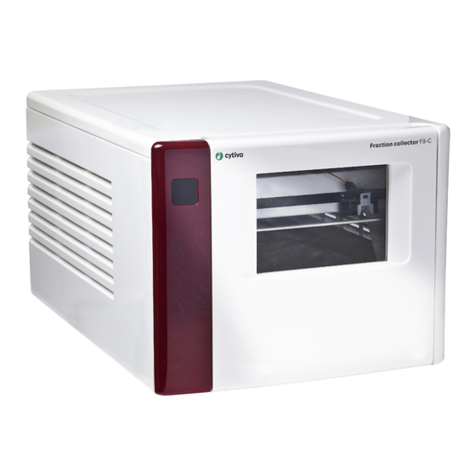
cytiva
cytiva F9-C unpacking instructions

OHAUS
OHAUS PR124 user guide

Bioer
Bioer GeneExplorer Series Operation manual

Thermo Scientific
Thermo Scientific Barnstead Pretreatment System Installation and operation

SP Scientific
SP Scientific VIRTIS FREEZEMOBILE SHELL BATH owner's manual
